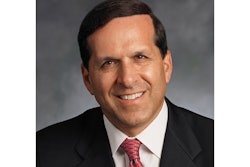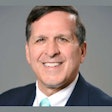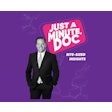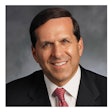Hiring, managing, and retaining quality teams remains one of the most significant pain points for dental practices nationwide. As a human resources (HR) professional who has worked extensively with dental practices, I've witnessed firsthand the frustration dentists experience when what should be a straightforward process -- finding and keeping great team members -- becomes an overwhelming headache.
When I ask dentists about their biggest operational challenges, staffing consistently tops the list. The reason is clear: unlike clinical skills that were taught in dental school, people-management skills are rarely part of a dentist's formal education. Managing a team is a skill set in itself, one that many talented dentists were simply never given the chance to develop.
 Adrienne A. Reynolds, PhD
Adrienne A. Reynolds, PhD
I often tell practice and business owners, “People don't intend to be bad managers, but without proper training and tools, it's basically just guesswork.”
The cost of getting it wrong
This “guesswork” approach to human resources is extraordinarily expensive. Consider this sobering reality: One bad hire can cost your dental practice up to five times that person's annual salary.
Let that sink in. If you hire someone at $50,000 and it doesn't work out, your practice could hemorrhage up to $250,000 when accounting for direct costs like recruitment, onboarding, and training, plus indirect costs like reduced team morale, lost productivity, and potential patient dissatisfaction.
Most practice owners I consult with are shocked by these figures. Few budget for the possibility of hiring mistakes, yet many make them repeatedly without understanding why.
Many practice owners approach hiring with uncertainty. They grab a generic job description online, post it, and hope the right candidate appears. Interview decisions are often made based on instinct rather than strategy. While this approach can occasionally yield a good fit, more often it leads to mismatches that strain both the leader and the team.
This is a hiring approach that I call “HR by intuition,” and it is remarkably common. The problem isn't that dentists lack judgment, it's that they evaluate candidates without a systematic framework for success.
The result? A revolving door of team members, inconsistent patient experiences, and countless hours spent in damage control mode rather than growing the practice.
The evidence-based solution to practice staffing
After spending 15 years specializing in evidence-based HR practices, I now teach a systematic approach that transforms how dental practices handle their most valuable asset: their people.
The solution starts with understanding that technical skills alone don't predict success. What truly differentiates high-performing dental team members is specific behavioral competencies -- measurable patterns of thinking and behavior that drive performance.
These aren't vague qualities like if a candidate is “detail-oriented” or has “good communication skills.” They're precisely defined attributes backed by science and predictive of success in specific dental practice roles.
If you want to hire and retain the right people for your practice, here are five key areas you’ll need to develop:
- Evidence-based job descriptions: Move beyond listing technical skills. Define the four to six behavioral competencies most critical for success in each role.
- Structured interview techniques: Develop interview questions that assess whether candidates truly demonstrate the competencies you’re looking for, not just whether they say the right things.
- Comprehensive onboarding processes: Create a plan that sets new hires up for success starting on Day 1, clarifying expectations and building engagement early.
- Performance management frameworks: Build systems that tie feedback and growth conversations directly to the competencies you identified, making them collaborative and constructive instead of stressful or vague.
- Retention strategies: Regularly check in with team members to understand what’s working, what isn’t, and what keeps them committed to your practice.
Each of these steps helps replace guesswork with intention, turning your practice into a place where the right people want to work and stay.
The transformation also starts with reframing how you think about your practice's employer brand. Before posting your next job opening, consider these questions:
- What are your practice values?
- What makes your office special?
- Why would someone want to work with you rather than the practice down the street?
Once you've established your identity as an employer, every step of your HR process should reinforce it, from job descriptions to interview questions to performance evaluations.
Here's how it looks in practice.
Step 1: Create job descriptions that actually work.
Standard job descriptions focus almost exclusively on technical skills and responsibilities. Transformative job descriptions incorporate behavioral competencies, the “how” behind the “what.”
For example, if you are trying to fill a dental hygienist position, instead of simply requiring “three-plus years of experience,” you might specify that candidates need to demonstrate “patient relationship management,” defined as “the ability to build rapport with diverse patient populations while efficiently delivering exceptional clinical care.”
Step 2: Draft structured behavioral interviews.
Once you've identified the key competencies for success, design interview questions that specifically evaluate them. Instead of asking "Are you detail-oriented?" (which invites predictable responses), ask candidates to “describe a time when attention to detail prevented a significant problem.”
Their answers reveal whether they truly possess the competency or are simply saying what they think you want to hear.
Step 3: Create an environment of proactive performance management.
Most performance issues stem from unclear expectations. By linking your performance management system to the same competencies you used for hiring, you create a seamless language for discussing growth and development.
This step transforms potentially confrontational conversations into collaborative problem-solving sessions focused on specific behaviors rather than vague impressions.
Step 4: Implement strategic retention efforts.
The “stay interview,” a structured conversation with current, high-performing team members about what keeps them engaged and what might cause them to leave, is one of the most powerful retention tools at your disposal.
These conversations identify issues before they become resignation letters and demonstrate your commitment to your team's well-being.
Practices that implement these evidence-based HR approaches consistently report:
- Reduced turnover rates (often by 30% or more)
- Higher team engagement scores
- Improved patient satisfaction
- Significant cost savings from fewer hiring mistakes
- Reduced stress for practice owners and managers
When dental practices implement these systematic HR processes, they experience a profound shift. For the first time in years, they're no longer constantly worried about staffing issues.
With reliable processes in place, doctors can redirect their focus to patient care and practice growth instead of perpetually training new team members. The constant anxiety about who might quit next or whether a new hire will work out fades, replaced by confidence in a stable, high-performing team.
If you're ready to transform how your practice approaches hiring and management:
- Audit your current HR processes. How are you currently attracting, hiring, developing, and retaining talent? Where are the gaps?
- Invest in proper tools and training. Just as you wouldn't perform clinical procedures without the right instruments, don't attempt to manage people without proper resources.
- Build a community of support. Connect with other practice owners who are navigating similar challenges and share best practices.
HR doesn't have to be a necessary evil in your practice. With the right approach, it can become your competitive advantage in attracting and keeping the team members who will help your practice thrive.
Adrienne A. Reynolds, PhD, is the chief HR and learning officer for Productive Dentist Academy, where she has developed tools like the Dental tQ platform to help dental leaders build thriving teams. An award-winning HR leader and published researcher, Reynolds specializes in aligning leadership strategies with team strengths, creating harmony, and delivering actionable insights for transformative success.
The comments and observations expressed herein do not necessarily reflect the opinions of DrBicuspid.com, nor should they be construed as an endorsement or admonishment of any particular idea, vendor, or organization.



















